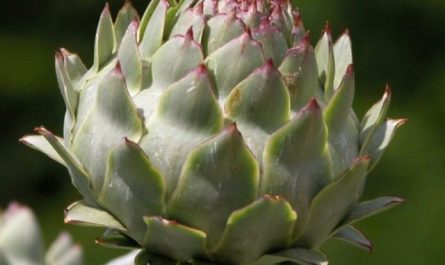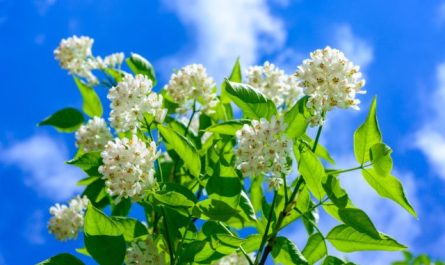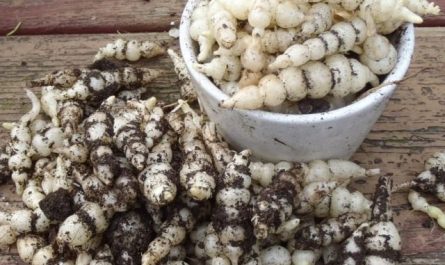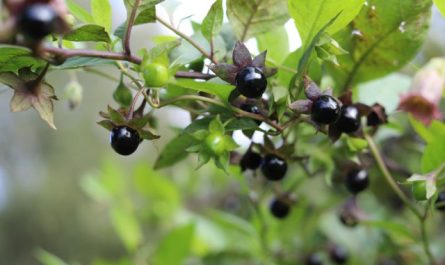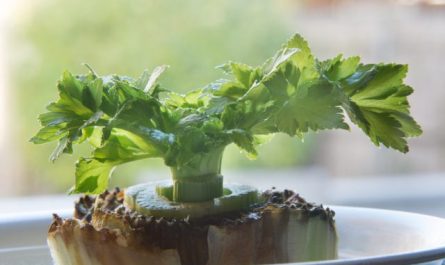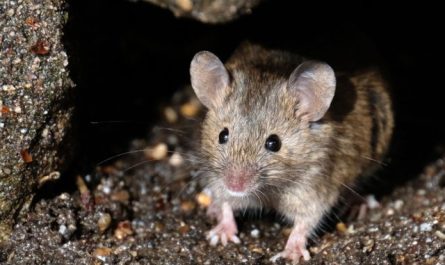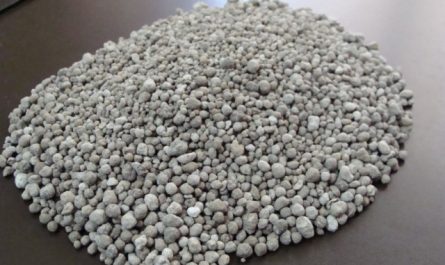Cucumbers belong to the category of vegetable crops, the fruits of which are in demand all year round, so gardeners often prefer to grow cucumber plants in greenhouse conditions. By growing cucumbers in a greenhouse, you can get an earlier harvest and extend the period of their fruiting, because in a greenhouse the influence of external conditions on plants will be minimal. At the moment, more than 1350 varieties and hybrids of this vegetable crop have been bred. In this article, we will talk about high-quality and new varieties and hybrids of cucumbers that can be grown in greenhouse conditions.

Cucumber “Authority F1” (Gavrish company) is a hybrid approved for use in the 3rd light zone. Suitable for cultivation in greenhouse conditions. Ideal in salads. It begins to bear fruit in 65-69 days from the start of seed germination. The branching intensity is low, the flower formation is mixed. There are 3 fruit-forming flowers in a node. The leaf is greenish, small. The cucumbers are small, cylindrical, green in color, striped. There are tubercles and grayish pubescence on the skin. The cucumber weighs 120-126 grams. Fruit tasters note their good taste. Up to 34,3-35,3 kilograms of cucumbers are harvested from a square meter. The percentage of quality fruits from the total yield reaches 90-93%. The cucumber hybrid “Avtoritet F1” is relatively resistant to common field mosaic (CVM 1), root rot, powdery and downy mildew (MP and LMP), shade-tolerant, and good as a pollinator.
Cucumber “Athlete F1” (Gavrish company) is a hybrid approved for use in the 1st, 2nd, 3rd, 4th, 5th and 6th light zones. Suitable for cultivation in greenhouse conditions. Ideal for salad. It begins to bear fruit in 50-60 days from the start of seed germination. The athlete has a medium-branched, mixed nature of flower formation. There are four fruit-forming flowers in each node. The leaf is greenish, large. Cucumbers develop up to 20-22 cm in length, their shape is cylindrical, the skin color is dark greenish, short blurred stripes on the surface. There are tubercles on the skin, light pubescence. The weight of the cucumber varies from 140 to 210 grams. Fruit tasters note their good taste. 27,2 kilograms of cucumbers are collected from a square meter. The percentage of quality fruits from the total harvest reaches 89. The cucumber hybrid “Athlete F1” is resistant to powdery mildew (MP), shade-tolerant.
Cucumber “Bodryachok F1” (Gavrish company) – hybrid, approved for cultivation in 1st, 2nd, 3rd, 4th, 5th and 6th light zones. Suitable for cultivation in greenhouse conditions. Ideal for salads. After 65-60 days from the emergence of sprouts, it begins to bear fruit. Bodryachok is a medium-branched cucumber hybrid with a mixed flowering pattern. There are up to three pistillate flowers in a nodule. The leaf is greenish, small. The cucumbers are of moderate length, greenish in color with small stripes. On the surface of the cucumber there are medium-sized tubercles, noticeable whitish-gray, sparse pubescence. The pulp is of medium density. The weight of the cucumber reaches 142 grams. Tasters note the good taste of the fruit. Up to 35 kilograms of cucumbers can be collected from a square meter. The percentage of quality fruits from the total harvest reaches 94. The cucumber hybrid “Bodryachok F1” is resistant to powdery mildew (MP), shade-tolerant, and good as a pollinator.


Cucumber “Viscount F1” (Gavrish company) – hybrid, approved for cultivation in the 2nd and 3rd light zones. Ideal for cultivation in greenhouse conditions. Suitable for salads, parthenocarpic. After 47-56 days from the emergence of sprouts, it begins to bear fruit. Viscount is a medium-branched cucumber hybrid, pistillate flowers. There are up to three pistillate flowers in a nodule. The leaf is greenish, small. Cucumbers are of medium length (18-20 cm), have an elongated shape, a dark greenish color and small stripes. On the surface of the cucumber there are small tubercles, noticeable whitish-gray, dense pubescence. The weight of the cucumber reaches 147 grams. Tasters note the good and excellent taste of the fruit. From a square meter you can collect 27,9 kilograms of cucumbers. Cucumber hybrid “Viscount F1” is resistant to root rot. Shade-tolerant.
Cucumber “Voyage F1” (Gavrish company) – hybrid, approved for cultivation in the third and fifth light zones. Fully suitable for cultivation in greenhouses. Parthenocarpic. Begins to bear fruit 5-43 days after emergence. Voyage is a cucumber hybrid of medium branching strength, with a female flowering pattern. There are up to four female flowers in a node. The leaf is greenish, medium, smooth. The cucumbers are short (64 cm), oval-shaped, green in color, and have small, blurred stripes. There are rare tubercles on the surface of the cucumber, noticeable whitish-gray pubescence. The pulp is of medium density. The weight of a cucumber reaches 12 grams. Tasters note the good taste of the fruit. Up to 110 kilograms of cucumbers can be collected from a square meter. The percentage of quality fruits from the total yield reaches 17,9-88. The cucumber hybrid “Voyage F96” is distinguished by its increased resistance to adverse conditions and the main cucumber diseases. The fruits are ideal for canning.
Cucumber “Gambit F1” (Gavrish company) – hybrid, approved for cultivation in the 3rd light zone. Ideal for cultivation in greenhouse conditions. Often used for salads, parthenocarpic. After 53-65 days from the emergence of sprouts, it begins to bear fruit. Gambit is a medium-branched cucumber hybrid that forms pistillate flowers. There are up to three pistillate flowers in a nodule. The leaf is greenish, small. The fruits are of medium length, green in color with small, short stripes. There are tubercles on the surface of the cucumber, noticeable whitish-gray, dense pubescence. The weight of the cucumber reaches 115 grams. Tasters note the good taste of the fruits. From a square meter, you can collect 28 kilograms of cucumbers. The percentage of quality fruits from the total yield reaches 97-98. The cucumber hybrid “Gambit F1” is resistant to cladosporiosis and powdery mildew (MP), and tolerant to downy mildew (LMP).

Cucumber “Cadet F1” (Gavrish company) – hybrid, approved for use in the 3rd light zone. Suitable for cultivation in greenhouse conditions. Ideal for salad, parthenocarpic. After 57-63 days from the emergence of sprouts, it begins to bear fruit. Cadet is a medium-branched cucumber hybrid, it has predominantly pistillate flowers. There are up to three pistillate flowers in a knot. The leaf is greenish, small. The fruits are of medium length, greenish in color and have small, blurred, light green stripes. On the surface of the cucumber there are tubercles, noticeably whitish-gray, dense pubescence. The weight of the cucumber reaches 106-131 grams. Tasters note the excellent taste of the fruit. Up to 19 kilograms of cucumbers can be collected from a square meter. The percentage of quality fruits from the total yield reaches 95. The cucumber hybrid “Kadet F1” is shade-tolerant, resistant to cladosporiosis and powdery mildew (MP).
Cucumber “Casanova F1” (Gavrish company) – hybrid, approved for cultivation in 1st, 2nd, 3rd, 4th, 5th and 6th light zones. Ideal for cultivation in greenhouse conditions. Perfect as a component of salads. After 53-57 days from the emergence of sprouts, it begins to bear fruit. Casanova is a medium-branched cucumber hybrid, vigorous, with a mixed flowering pattern. There are up to five pistillate flowers in a knot. The leaf is greenish, large. The fruits reach 20 cm in length, they are dark green in color, have medium-length, blurred stripes. On the surface of the cucumber there are rare tubercles, noticeable whitish-gray pubescence. The weight of the cucumber reaches 180 grams. Tasters note the good taste of the fruits. From a square meter you can collect 29 kilograms of cucumbers. The percentage of quality fruits from the total harvest reaches 92. The cucumber hybrid “Casanova F1” is high-yielding and is used as a pollinator.
Cucumber “Nasha Dasha F1” (agrofirm “SeDek”) – a hybrid, approved for use in the second zone. Suitable for cultivation in greenhouses. Usually used in salads, parthenocarpic. After 40-45 days from the emergence of sprouts, it begins to bear fruit. Nasha Dacha is a medium-branched cucumber hybrid with a pistillate flowering pattern. There are up to four pistillate flowers in a nodule. The leaf is greenish, medium. The cucumbers are short (8-10 cm), green in color, with large tubercles. On the surface of the cucumber there is a whitish, medium-density pubescence. The weight of the cucumber reaches 80-100 grams. Tasters note the good taste of the fruits. Up to 11 kilograms of cucumbers can be collected from a square meter. The percentage of quality fruits from the total yield reaches 96. The cucumber hybrid “Nasha Dasha F1” is resistant to powdery mildew (MP).

Cucumber “Talisman F1” (agrofirm “Semko-Junior”) – a hybrid, approved for use in the 1st, 4th, 5th and 6th light zones. Suitable for cultivation in greenhouses. Parthenocarpic. After 55-60 days from the beginning of the emergence of shoots, it begins to bear fruit. Talisman is an indeterminate cucumber hybrid of medium branching strength, having a female flowering pattern. There are up to three female flowers in a node. The leaf is greenish, medium. Cucumbers are short (10-12 cm), have an oval shape, green color and small, slightly blurred stripes. There are tubercles on the surface of the cucumber, whitish-gray pubescence is noticeable. The weight of the cucumber reaches 8 grams. Tasters note the good taste of the fruit. Up to 8 kilograms of cucumbers can be collected from a square meter. The percentage of quality fruits from the total harvest reaches 97. The cucumber hybrid “Talisman F1” is resistant to powdery mildew (MP) and tolerant to downy mildew (LMP). Ideal for canning.
Cucumber “Odessit F1” (Gavrish company) – hybrid, permitted for cultivation in the 3rd light zone. Ideal for cultivation in greenhouse conditions. Ideal as a component of salads. After 65-69 days from the emergence of sprouts, it begins to bear fruit. Odessit is a medium-branched cucumber hybrid that forms both pistillate and staminate flowers. There are up to three pistillate flowers in a knot. The leaf is greenish, medium. The cucumbers are of medium length, green in color and have small, blurred, light stripes. There are tubercles on the surface of the cucumber, noticeable whitish-gray, sparse pubescence. The weight of the cucumber reaches 110 grams. Tasters note the good taste of the fruit. Up to 34 kilograms of cucumbers can be collected from a square meter. The percentage of quality fruits from the total harvest reaches 94. The cucumber hybrid “Odessit F1” is resistant to powdery mildew (MP), shade-tolerant, and good as a pollinator.
Cucumber “Pikas F1” (Gavrish company) – hybrid, approved for cultivation in the 3rd light zone. Suitable for cultivation in greenhouse conditions. Often used for salads, parthenocarpic. After 66-68 days from the emergence of sprouts, it begins to bear fruit. Pikas is a medium-branched, indeterminate cucumber hybrid that forms pistillate flowers. There are up to three pistillate flowers in a nodule. The leaf is greenish, large. The cucumbers are of moderate length, greenish with small ribs. The weight of the cucumber reaches 220 grams. Tasters note the good taste of the fruits. Up to 27 kilograms of cucumbers can be collected from a square meter. The percentage of quality fruits from the total yield reaches 98. The cucumber hybrid “Pikas F1” is tolerant to powdery mildew (MP).


Cucumber “Rais F1” (Gavrish company) – hybrid, approved for cultivation in 1st, 2nd, 3rd, 4th, 5th and 6th light zones. Suitable for cultivation in greenhouse conditions. Usually used for salads. After 58-61 days from the beginning of the formation of seedlings, it begins to bear fruit. Rais is a medium-branched, parthenocarpic, indeterminate cucumber hybrid that forms pistillate flowers. There are up to three or more pistillate flowers in a nodule. The leaf is greenish, small. The cucumbers are of moderate length, greenish in color with blurred stripes. There are tubercles on the surface of the cucumber, a noticeable whitish-gray pubescence. The pulp is of medium density. The weight of the cucumber reaches 144 grams. Tasters note the excellent taste of the fruit. From a square meter, you can collect 28-29 kilograms of cucumbers. The percentage of quality fruits from the total harvest reaches 98. The cucumber hybrid “Rais F1” is resistant to cladosporiosis and powdery mildew (MP). Shade-tolerant.
Cucumber “Saher F1” (Gavrish company) – hybrid, permitted for cultivation in zone 64. Suitable for cultivation in greenhouse conditions. Often used in salads, parthenocarpic. Begins to bear fruit 75-270 days after sprouts appear. Sacher is a medium-branched, indeterminate cucumber hybrid with pistillate flowering. There are up to two pistillate flowers in a nodule. The leaf is greenish, medium-sized. The cucumbers are elongated, green in color, smooth. The cucumber weighs up to 280-30 grams. Tasters note the excellent taste of the fruit. Up to 95 kilograms of cucumbers can be harvested from a square meter. The percentage of quality fruits from the total yield reaches 1. The cucumber hybrid Sacher F is resistant to fusarium and shade-tolerant.
Cucumber “Sorrento F1” (Gavrish company) – hybrid, permitted for cultivation in zone 66. Suitable for cultivation in greenhouse conditions. Often used for salads, hybrid, parthenocarpic. After 68-230 days from the emergence of sprouts, it begins to bear fruit. Sorrento is a medium-branched, indeterminate cucumber hybrid with a pistillate flowering pattern. There are up to two pistillate flowers in a nodule. The leaf is greenish, small. The fruits are of medium length and dark greenish in color. The weight of the cucumber reaches 18,5 grams. Tasters note the good taste of the fruits. From a square meter you can collect 95 kilograms of cucumbers. The percentage of quality fruits from the total yield reaches 96-1. The cucumber hybrid “Sorrento F1” is resistant to cladosporiosis and cucumber mosaic (VMO ).
Note: What are light zones?
The intensity of solar radiation in a given region is the main factor determining the types and kinds of greenhouses in a given area, the range of crops grown, and the periods and timing of growing these crops. Solar radiation has a certain intensity, spectral composition, and daily duration, depending on the zone of growing vegetable crops in greenhouses. In Russia, there is mainly a latitudinal distribution of total solar radiation: the amounts decrease from south to north.

Scientists have conducted zoning of the country’s territory by the influx of natural PAR (photosynthetic active radiation). In accordance with the calculated monthly amounts of total PAR in December – January (the most critical months for radiation influx), all regions of the country are divided into 7 light zones.
1st light zone
- Arkhangelsk region
- Vologda region
- Leningrad Region
- Magadan region
- Novgorod region
- Pskov region
- The Republic of Karelia
- The Republic of Komi
2st light zone
- Ivanovo region
- Kirov region
- Kostroma region
- Nizhny Novgorod region
- Perm region
- The Republic of Mari El
- The Republic of Mordovia
- Tver region
- Udmurt Republic
- Chuvash Republic
- Yaroslavl region
3st light zone
- Belgorod region
- Bryansk region
- Vladimir region
- Voronezh region
- Kaliningrad region
- Kaluga region
- Krasnoyarsk Territory
- Kurgan region
- Kursk region
- Lipetsk region
- Moscow region
- Orel region
- The Republic of Bashkortostan
- The Republic of Sakha (Yakutia)
- The Republic of Tatarstan
- The Republic of Khakassia
- Ryazan region
- Sverdlovsk region
- Smolensk region
- Tambov region
- Tomsk region
- Tula region
- Tyumen Region
4st light zone
- Altay
- Astrakhan region
- Volgograd region
- Irkutsk Region
- Kamchatka
- Kemerovo region
- Novosibirsk region
- Omsk Region
- Orenburg region
- Penza region
- Altai Republic
- The Republic of Kalmykia
- Republic of Tuva
- Samara region
- Saratov region
- Ulyanovsk region
5st light zone
- Krasnodar region (except the Black Sea coast)
- The Republic of Adygea
- The Republic of Buryatia
- Rostov region
- Chita region
6st light zone
- Krasnodar region (Black Sea coast)
- Kabardino-Balkaria
- Karachay-Cherkessia
- The Republic of Dagestan
- The Republic of Ingushetia
- Republic of North Ossetia – Alania
- Stavropol region
- The Chechen Republic
7st light zone
- Amur Region
- Primorsky Krai
- Sakhalin Region
- Khabarovsk Krai
